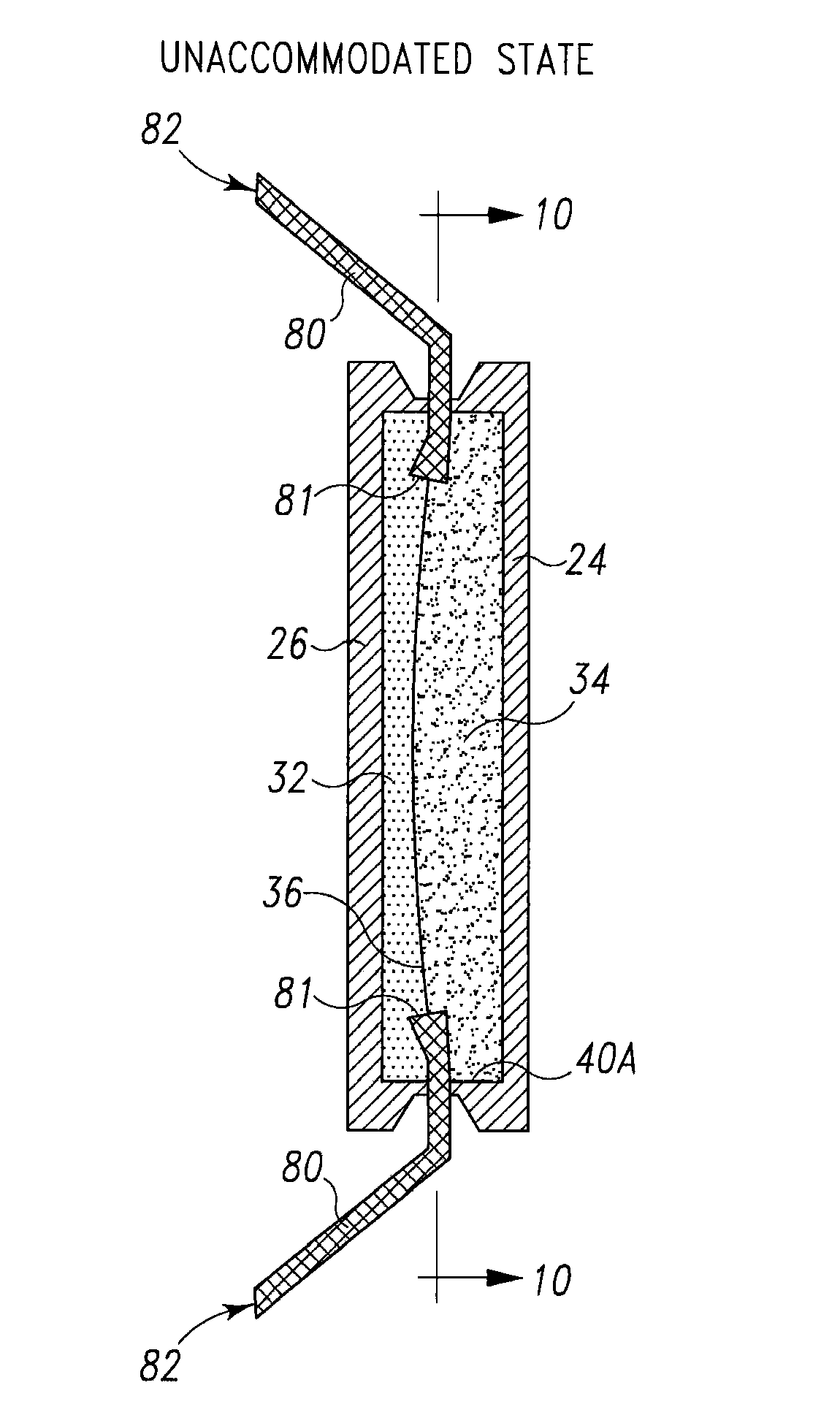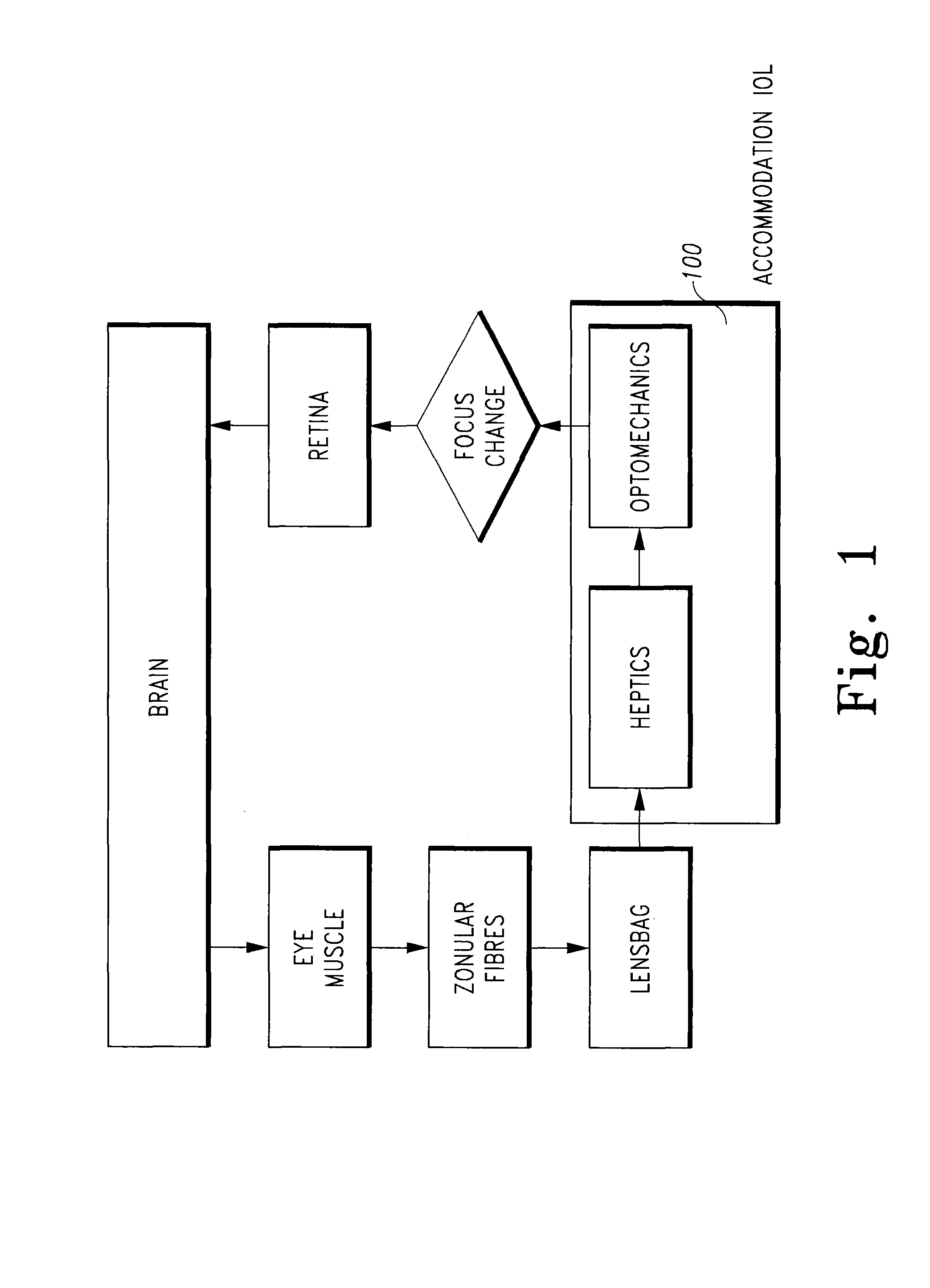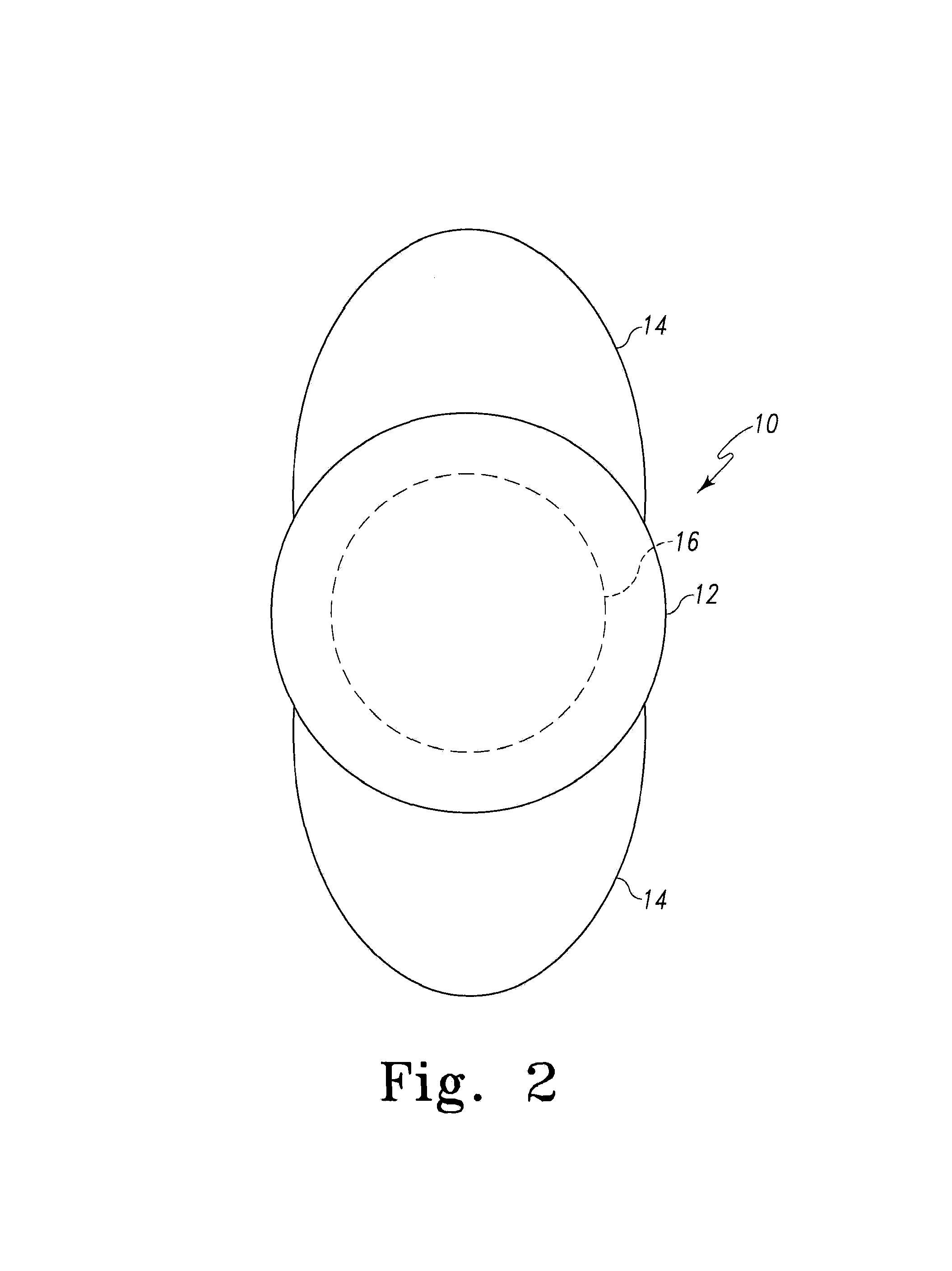Interfacial refraction accommodating lens (IRAL)
a technology of iral and iraxial refraction, which is applied in the field of intraocular lenses, can solve the problems of fixed refractive power, inability to change the focus in response to changing patient's focal distance needs, and varying degrees of vision impairmen
- Summary
- Abstract
- Description
- Claims
- Application Information
AI Technical Summary
Benefits of technology
Problems solved by technology
Method used
Image
Examples
Embodiment Construction
[0051]The basic principles of accommodating lenses are, of course, well known to one skilled in the art. These principles are illustrated at FIGS. 1 and 2 (and associated disclosure at column 4 line 20 through line 52) of U.S. Pat. No. 5,489,302 that disclosure being specifically incorporated by reference herein.
[0052]Generally, in one aspect, this invention is an implantable interfacial refraction ophthalmic lens (IRAL) assembly or apparatus which adjusts its focal distance in response to changing physiologic needs of the user of said lens (e.g., a patent in which the lens has been implanted.). The lens comprises a flexible optic chamber, lens body, or optic and cooperating haptics. The optic chamber is defined by opposed, substantially parallel, visually transparent, generally circular, elastic or stretchable discs or walls, which are flexibly coupled at their edges and spaced apart to define a closed fluidic chamber. The fluidic chamber includes first and second liquids, the liqu...
PUM
 Login to View More
Login to View More Abstract
Description
Claims
Application Information
 Login to View More
Login to View More - R&D
- Intellectual Property
- Life Sciences
- Materials
- Tech Scout
- Unparalleled Data Quality
- Higher Quality Content
- 60% Fewer Hallucinations
Browse by: Latest US Patents, China's latest patents, Technical Efficacy Thesaurus, Application Domain, Technology Topic, Popular Technical Reports.
© 2025 PatSnap. All rights reserved.Legal|Privacy policy|Modern Slavery Act Transparency Statement|Sitemap|About US| Contact US: help@patsnap.com



